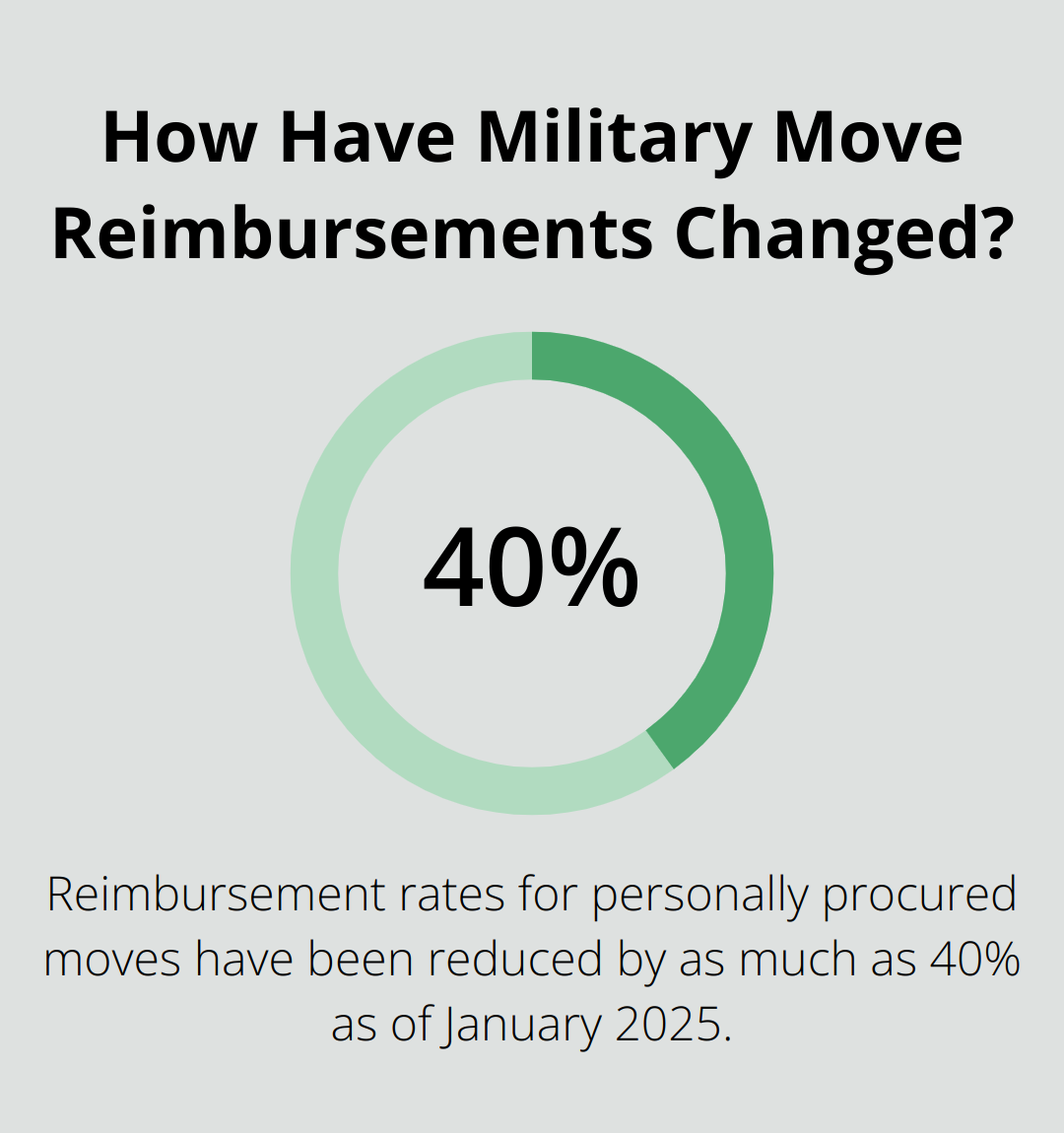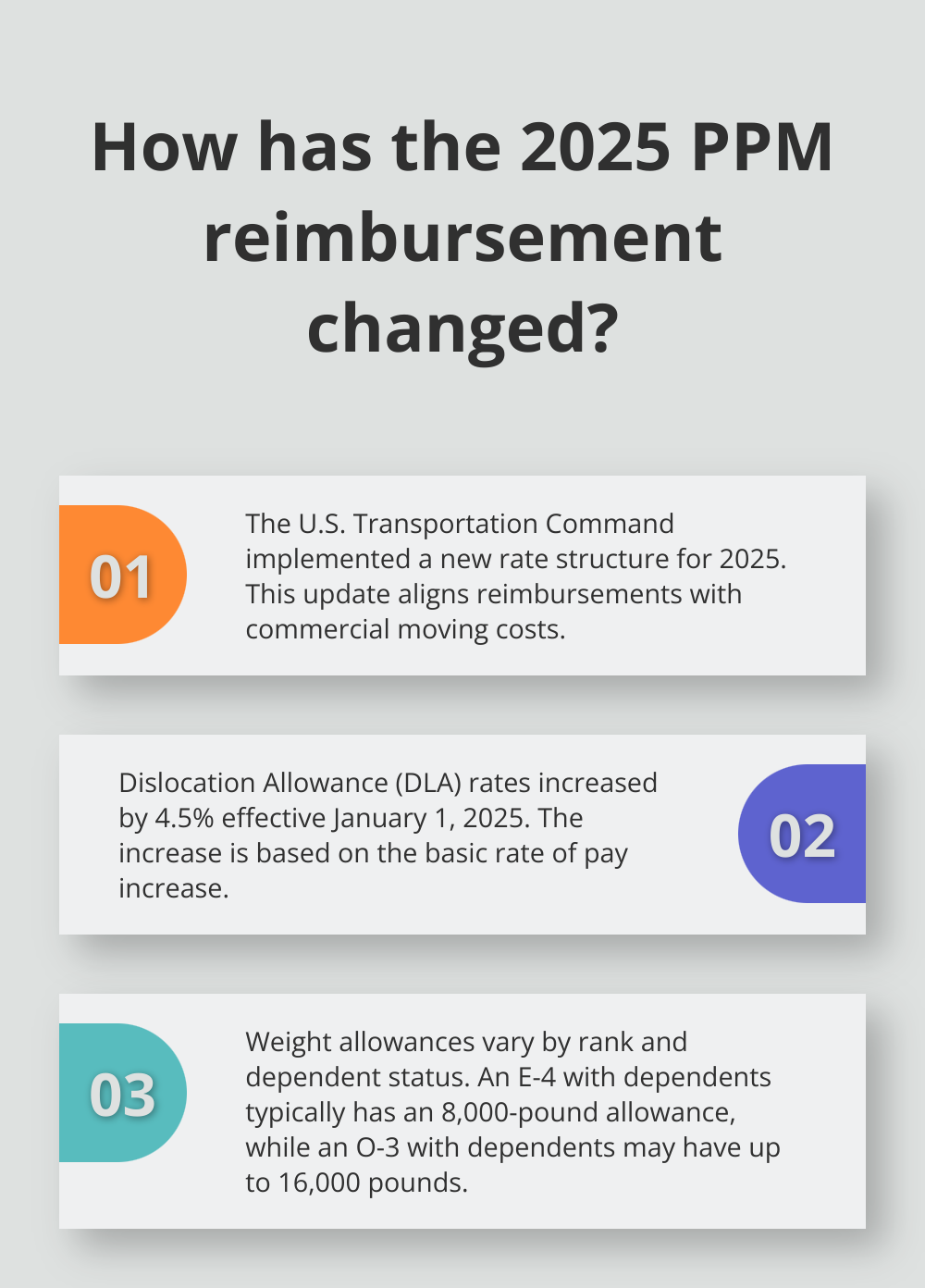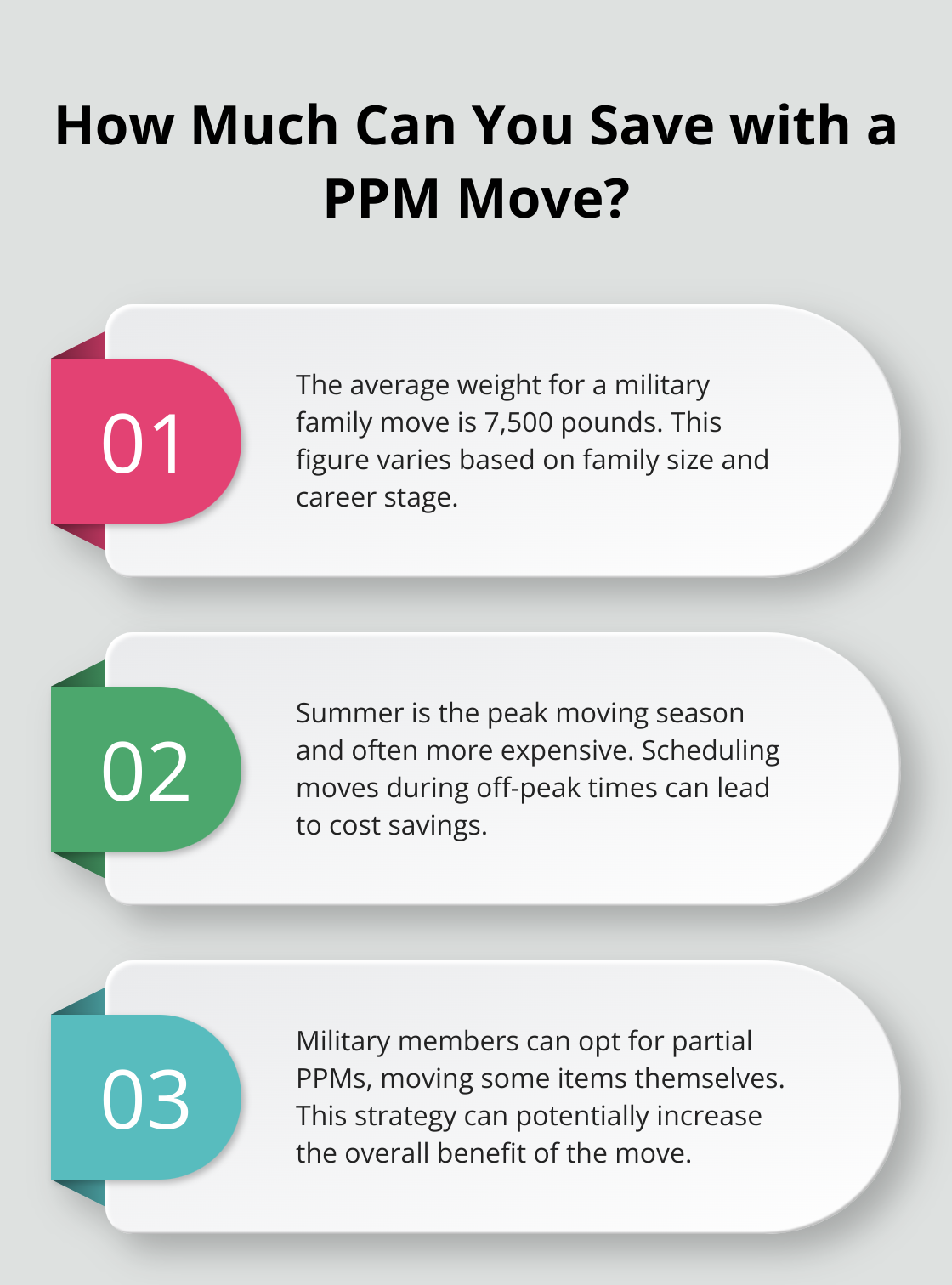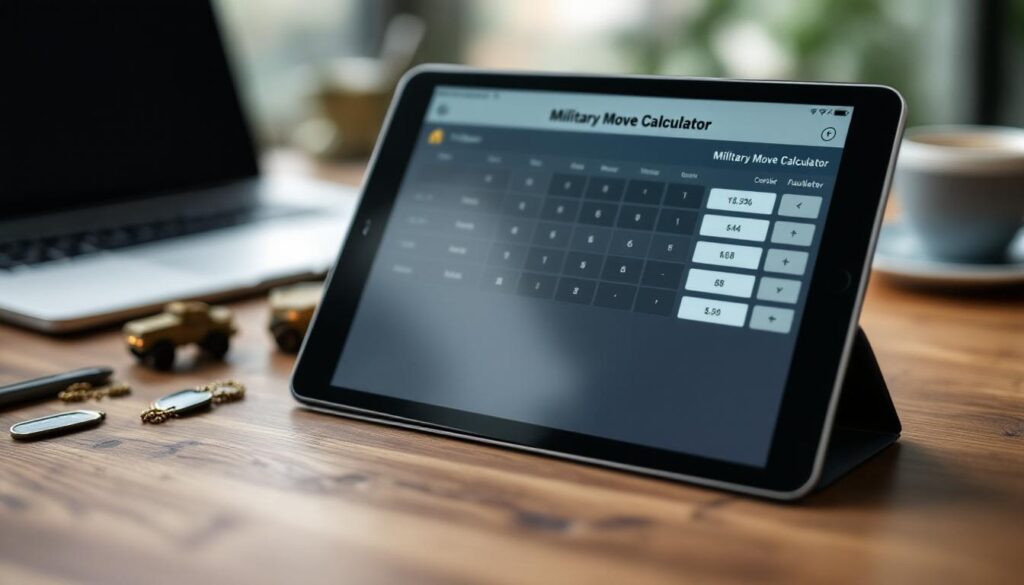Military moves can be complex, but a PPM military move calculator simplifies the process. At Southbay Moving Systems, we understand the challenges service members face when relocating.
This guide will walk you through using a PPM calculator effectively, helping you make informed decisions about your move. By the end, you’ll have a clear understanding of how to maximize your reimbursement and streamline your relocation experience.
What Is a PPM Military Move?
Definition and Overview
A Personally Procured Move (PPM), previously known as a Do-It-Yourself (DITY) move, offers military service members the option to manage their own relocation. This approach allows you to take control of your move instead of relying on government-contracted movers.
Advantages of Choosing PPM
Flexible Timeline
PPM provides complete control over your moving schedule. This flexibility proves invaluable when you need to align your move with school calendars or job transitions.
Potential Cost Savings
You can potentially save money with a PPM. However, recent changes have affected reimbursement rates. As of January 2025, reimbursement rates for personally procured moves have been reduced by as much as 40%, according to military move reform advocate Megan Harless.
Eligibility and Requirements
To qualify for a PPM, you must:
- Be an active duty service member
- Have official Permanent Change of Station (PCS) orders
- Obtain approval before starting the process (typically through your installation’s transportation office)
Weight Considerations
Accurate estimation and documentation of your household goods’ weight is paramount in a PPM. Your reimbursement depends on this weight, up to your rank-based allowance. For example, an E-5 with dependents might have a weight allowance of 9,000 pounds. Exceeding this limit could result in out-of-pocket expenses.
Financial Record-Keeping
Maintaining accurate records of all expenses is essential for a successful PPM. Keep receipts for:
- Packing materials
- Truck rentals
- Fuel costs

These records will be necessary for reimbursement and can help you maximize your potential savings.
As you prepare for your PPM, understanding how to use a PPM Military Move Calculator becomes the next logical step in ensuring a smooth and cost-effective relocation.
Components of a PPM Military Move Calculator
Weight Allowance Calculation
The weight allowance feature forms the core of any PPM calculator. This component considers your military rank and dependent status to determine the maximum weight of household goods you can move at government expense. An E-4 with dependents typically has a weight allowance of 8,000 pounds, while an O-3 with dependents might be allowed up to 16,000 pounds. Accurate input of this information prevents underestimation or overestimation of your reimbursement.
Distance Computation
PPM calculators compute the distance between your current duty station and your new assignment. This calculation usually relies on the official military table of distances (which may differ from standard mapping services). The distance directly impacts your reimbursement, affecting both the transportation allowance and potential per diem payments.
Reimbursement Rate Application
Current reimbursement rates are applied to your move by PPM calculators. New for the 2025 Moving Season, the U.S. Transportation Command has implemented a new rate structure to better align with commercial moving costs. This update may affect reimbursements for service members. Use a calculator that reflects these recent changes to get an accurate estimate.
Additional Allowances Consideration
Comprehensive PPM calculators factor in additional allowances beyond basic weight and distance calculations. These may include fuel costs, packing materials, and even temporary lodging expenses. Some calculators also incorporate the Dislocation Allowance (DLA), which varies based on rank and dependent status. For 2025, DLA rates have increased by 4.5% effective January 1, 2025, based on the basic rate of pay increase.
Accuracy and Limitations
While PPM calculators provide valuable estimates, they are not guarantees. Actual reimbursements can vary based on factors such as the specific route taken, unexpected expenses, and the accuracy of your weight tickets. Consult with your local transportation office for the most up-to-date information and personalized advice tailored to your unique situation.

Now that you understand the components of a PPM calculator, let’s explore how to use this tool effectively to plan your military move.
How to Use a PPM Calculator Effectively
Prepare Your Information
Before you start, collect all necessary data. This includes your current rank, number of dependents, and orders detailing your new duty station. You also need an accurate estimate of your household goods’ weight. Don’t guess – this figure significantly impacts your reimbursement. Use a household goods weight estimator or consult with a moving professional for a more precise figure.
Input Data Accurately
When using the calculator, precision is key. Enter your rank and dependent status exactly as they appear in your records. For the move distance, use the official military distance between duty stations, not estimates from mapping services. This often differs from civilian route calculations and affects your reimbursement.

Next, input your estimated household goods weight. If you’re unsure, it’s better to overestimate slightly. Recent data from the Defense Personal Property System shows the average weight for a military family move is around 7,500 pounds (though this varies widely based on family size and career stage).
Analyze the Results
After entering your data, the PPM calculator will provide an estimated reimbursement. When you use a PPM calculator, you’ll see several types of allowances pop up. These are the different ways the military compensates you for your move. Keep in mind that this is an estimate, not a guarantee.
Pay close attention to the breakdown of costs. Most calculators will show you how much you’re allotted for transportation, per diem, and other expenses separately. This breakdown helps you budget more effectively for your move.
Maximize Your Reimbursement
To get the most out of your PPM, consider these strategies:
- Time your move wisely. Summer is peak moving season and often more expensive. If possible, schedule your move during off-peak times.
- Get multiple quotes from moving companies. Compare these with your PPM estimate to ensure you’re making the most cost-effective choice.
- Don’t forget about partial PPMs. You can move some items yourself and let the government handle the rest, potentially increasing your overall benefit.
- Keep meticulous records. Save every receipt related to your move (including for packing supplies and fuel). These can often be claimed as additional expenses.
- Consider storage options. If you’re downsizing or have a gap between moves, look into storage solutions. Many moving companies (such as Southbay Moving Systems) offer secure, climate-controlled storage facilities that can be factored into your PPM.
These steps and tools like PPM calculators can turn your military move into a more manageable and potentially profitable experience. While calculators provide valuable estimates, consulting with moving experts can offer additional insights tailored to your unique situation.
Final Thoughts
PPM military move calculators provide essential estimates for service members planning relocations. These tools help you make informed decisions about your move and potentially maximize your reimbursement. Professional assistance can make a significant difference when calculators can’t account for unique challenges and unexpected situations in military moves.
Southbay Moving Systems specializes in military relocations and understands the intricacies of PPM moves. Our team can help you navigate the complexities of weight allowances, reimbursement rates, and additional expenses. We offer personalized guidance that goes beyond what a PPM military move calculator can provide.

You will benefit from combining insights from a calculator with professional moving services. This approach balances cost-effectiveness with convenience and peace of mind. Expert assistance (along with digital tools) will help you approach your military relocation with confidence.




